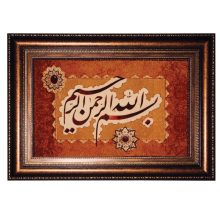نقد و بررسی
تابلو فرش دستباف دیوار ندبه Wailing Wall(براق) 261434
تابلو فرش دستباف دیوار ندبه (براق)
دیوار غربی،
مقدسترین مکان مذهبی
یهودیان است که یهودیان آن را
دیوار ندبه (به معنای تضرع و مویه) میخوانند
خراسان
50 رج
ابعاد فرش بدون قاب: 49 در 81
دیوار ندبه הַכּוֹתֶל הַמַּעֲרָבִי Wailing Wall
از ویکیپدیا، دانشنامهٔ آزاد
نمایی از دیوار براق در شب
‘
دیوار غربی،
مقدسترین مکان مذهبی
یهودیان است که یهودیان آن را
دیوار ندبه (به معنای تضرع و مویه) میخوانند بر روی «
تپه موریا» در شهر
اورشلیم قرار دارد. به باور یهودیان دیوار ندبه از آخرین باقیماندههای
هیکل سلیمان و دومین
پرستشگاه بیت المقدس و مرکز دعا و منبع الهام برای یهودیان در
اسراییل و سراسر جهان میباشد.
[۱] مسلمانان آن را
دیوار بُراق (به
عربی:
حائِط البُراق) میخوانند و معتقدند
پیامبر اسلام مرکب خود را در شب
معراج به آن بست.
[۲] در نماز سهگانه روزانه یهودیان جهان، مختصات این مکان به عنوان قبله استفاده میشود.
The
Western Wall (
Hebrew:
הַכּוֹתֶל הַמַּעֲרָבִי,
romanized: HaKotel HaMa’aravi,
lit. ‘the western wall’,
[۱] often shortened to
the Kotel or
Kosel), known in the
West as the
Wailing Wall, and in
Islam as the
Buraq Wall (
Arabic: حَائِط ٱلْبُرَاق,
Ḥā’iṭ al-Burāq Arabic pronunciation: [‘ħaːʔɪtˤ albʊ’raːq]),
[۲] is a portion of ancient limestone wall in the
Old City of Jerusalem that forms part of the larger
retaining wall of the hill known to Jews and Christians as the
Temple Mount. Just over half the wall’s total height, including its 17
courses located below street level, dates from the end of the
Second Temple period, and is believed to have been begun by
Herod the Great.
[۳] The very large stone blocks of the lower courses are Herodian, the courses of medium-sized stones above them were added during the
Umayyad period, while the small stones of the uppermost courses are of more recent date, especially from the Ottoman period.
The Western Wall plays an important role in Judaism due to its proximity to the Temple Mount. Because of the
Temple Mount entry restrictions, the Wall is the holiest place where Jews are permitted to pray outside the previous Temple Mount platform, as the presumed site of the
Holy of Holies, the most sacred site in the Jewish faith, lies just behind it. The original, natural, and irregular-shaped Temple Mount was gradually extended to allow for an ever-larger
Temple compound to be built at its top. The earliest source mentioning this specific site as a place of Jewish worship is from the 17th century.
[۴][۵] It also has a place in Muslim tradition, in which it is believed to be the site where the Islamic Prophet
Muhammad tied his winged steed, al-
Buraq, on his
Isra and Mi’raj to Jerusalem before ascending to paradise, and constitutes the western border of
al-Haram al-Sharif (“the Noble Sanctuary”), or the Al-Aqsa compound.
הכותל המערבי (בקיצור: הכותל) הוא אחד מארבעת קירות התמך המקיפים את הר הבית זה כאלפיים שנה, משלהי תקופת בית שני ועד ימינו. במסורת היהודית מיוחסת לכותל המערבי קדושה יתרה, ויהודים מתפללים בו כבר יותר מ-۱۱۰۰ שנים. בגניזה הקהירית מתועדות תפילות יהודים בכותל כבר במאות התשיעית והעשירית[۱] וככל הנראה כבר במאה ה-۱۴ נקבע מקום תפילה בסמוך אליו, המשמש לכך עד היום.
تابلو فرش دستباف یک اثر هنری ارزشمند و ماندگار و نوعی قالی پرزدار است که تنها در ایران تولید میشود. بافنده به کمک تکنیک های پیچیده بافت تصاویر را به دستبافته ای والا مبدل میسازد. این نوع بافت از حدود ۷۰۰ سال پیش در ایران ابداع شده و در روزگار فعلی به اوج کمال خود رسیده است. پرز این قالی ها عموما کرک و ابریشم و یا تلفیقی از آنهاست و از پنبه و یا ابریشم نیز در تار و پود دستبافته استفاده میشود. که بسته به متریال به کار برده شده در فرش ، کیفیت بافت ، تراکم گره ها ، نوع قاب و … ارزش مادی محصول تعیین میشود.









تابلو فرش دستباف دیوار ندبه Wailing Wall(براق) 261434
wailing wall